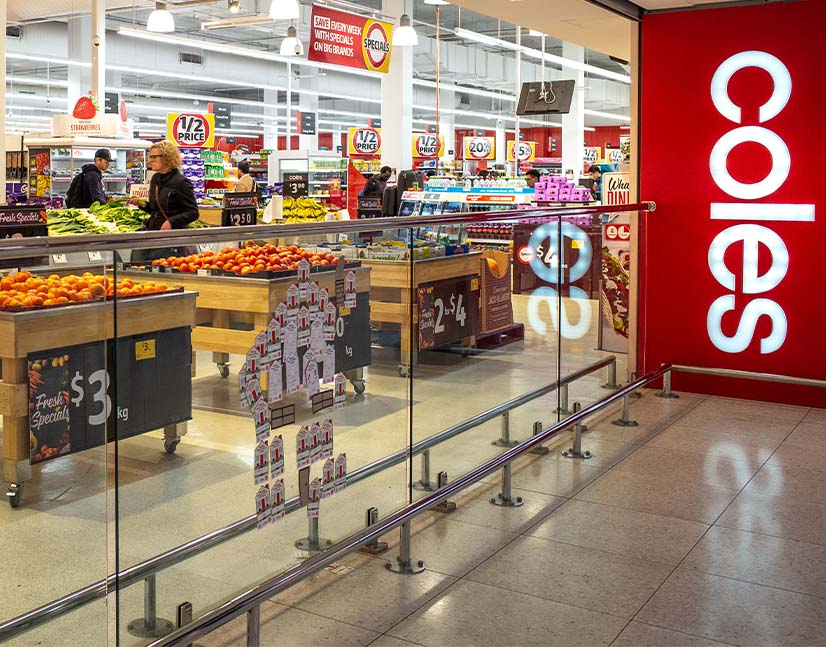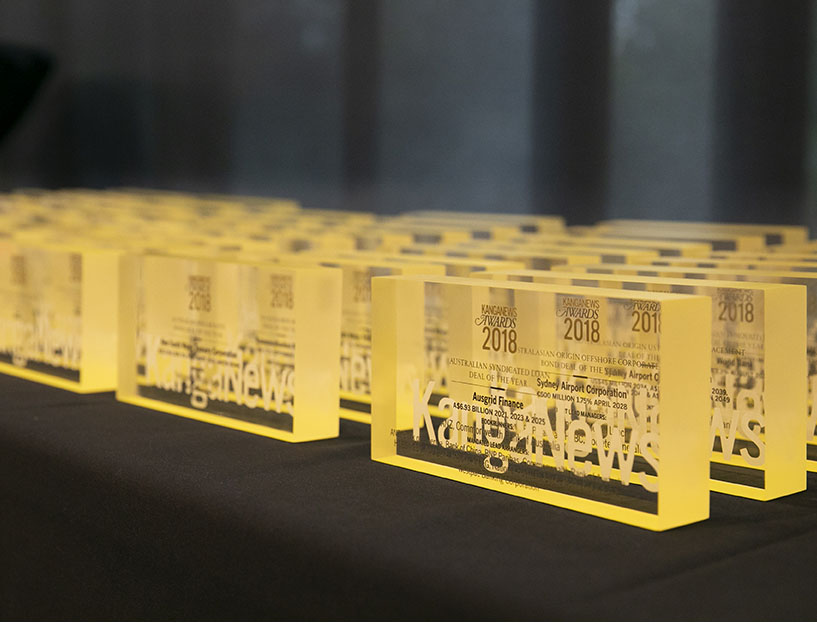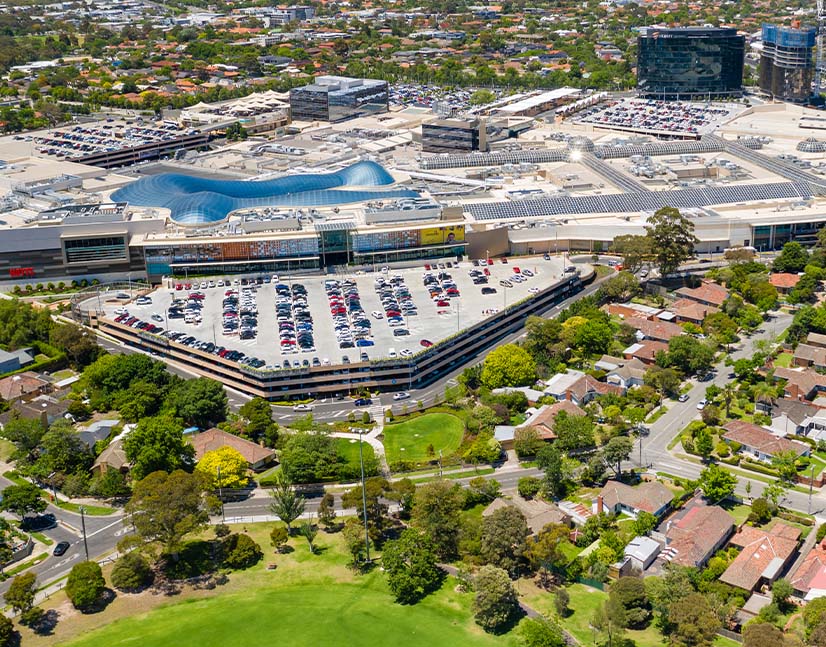
Corporate sustainable finance evolution
Investors globally are increasingly demanding their allocations align with sustainability principles. As capital markets move rapidly to cater to this appetite, KangaNews and BNP Paribas brought together Australian
corporate issuers to discuss their interaction with global debt markets.
PROGRESS REPORT
Craig How much more integrated is sustainability in business now compared with five years ago – and what does this mean for decision-making?
BURGMANN I have worked in sustainability for close to 15 years and what has been really great of late is the integration of sustainability into finance. I think this has played a very important role in elevating businesses’ focus on sustainability.
This has been the case at Sydney Airport for a long time – sustainability is important to the leadership team irrespective of our listed status. But in the last three years or so we have recognised that more stakeholders are asking us questions about our sustainability performance – particularly investors. These conversations are becoming increasingly sophisticated and are being linked to our financial performance.
We still have specific conversations about environmental, social and governance (ESG) factors with our investors because they want to get into the detail of our sustainability reporting.
These are complementary conversations with the normal, funding-based investor interaction we have. At the same time, the two topics often come up in the same conversation – and in fact this is happening more regularly in the last couple of years, especially in the last year.
VAN DER GEEST Melbourne Airport is possibly a little different from some of the other corporates participating in this discussion, as we have not completed a sustainability-linked financing transaction. This does not mean the organisation does not focus on sustainability and we are keenly keeping an eye on all the developments in this space.
We have been watching market activity with interest and we are really pleased to see the movement to bond-format transactions together with sustainability-linked loans (SLLs). Melbourne Airport has focused, and continues to focus, on ESG activities within its day-to-day operations. It is part of the way we do business and a critical part of our master-planning processes.
We are somewhat different from Sydney Airport – we are privately owned. The reporting obligations are different from an ASX-listed organisation, but we are still noting the increased engagement in this sector. For the last 18 months, the business has been focused on dealing with the COVID-19 situation – in Melbourne probably more so than the rest of Australia. But, pleasingly, sustainability and ESG has been a strategic pillar and focus continues to increase across the organisation.
Our philosophy is strategy-led from a treasury point of view. We are increasingly communicating with our debt investors about what we are doing. Following this type of communication, we go into financing and look at linking the developments – at the right time.
INNES Sustainability has always been a focus for many corporates. However, historically I think the focus was probably on seeing the benefits of sustainability in supporting corporate reputation. Increasingly, the focus is on the operational and growth benefits of sustainability, including its impact on cost and the opportunities to nurture new products and address new areas of demand.
The last era was one of integrating sustainable practices. Nowadays, I feel businesses have moved on to actively trying to transform markets to make them more sustainable.
In 2019, Coles announced its ambition to be Australia’s most sustainable supermarket. This puts sustainability at the heart of our strategy – in other words, sustainability is factored into decisions throughout the business. It is something for us all to consider rather than just something for the sustainability team to action.
Some examples of this are our decision no longer to give away plastic collectible toys, even if they are recyclable or made from recycled material, and embedding sustainability impacts within business cases.
BUSCH Worley provides professional-project and asset services in the energy, chemical and resources sector. Over the past few years we have noticed an increase, to around one third, of our revenue based on sustainability projects. We have long-term relationships with some of the largest energy, chemicals and resources companies in the world – and they are all investing in the decarbonisation of their existing assets.
We are seeing a lot of projects in hydrogen, carbon capture and storage, and renewable energy such as offshore wind farms. We are also seeing a lot more in the circular-economy pipeline, for example to recycle plastics. When it comes to ESG principles from a treasury and a finance perspective, Worley has been working on decarbonisation and sustainability projects for a long time. We have been able to align our long-term financing strategy with the group’s sustainability ambitions.
The development of the sustainable-finance market has been good in that the timing has corresponded with the changing nature of our business model. We have been able to align long-term financing with the group’s sustainability goals.
PEIFFER It is very interesting to hear the initial insights from the companies around the table. I have also seen a real shift in the sustainability discussions between BNP Paribas and our clients over the past five years.
Five years ago, when the sustainable-finance market was starting to take root in Asia and we began having these discussions, we could clearly see a dichotomy between our clients – some were clearly ahead of the discussion. All the teams had started to think about these topics, but for some it was very new.
Today, I do not see the dichotomy as much. Of course there are still clear leaders and the companies we have around the table today are a reflection of this. But even for those that are not yet as mature in the space, sustainability is being discussed among senior management and sometimes at board level. The level of maturity in the discussion may differ but most companies have at least reviewed their sustainability-materiality metrics and have some form of measurement or reporting.
They might not make it public, but they are internally tracking some key indicators. The next step for the companies that are a bit less mature is setting long-term targets. They typically engage us to look at their peer base: how they are positioned compared with their peers and what key targets their peers are reporting on. They also want to get insights on how investors and the banking community view targets when other borrowers have gone to market with a sustainable-finance transaction.
They can then review how to shape targets in the context of their own sustainability challenges and ambitions, and thereby make these targets easily actionable in their own future sustainable-finance issuance. Even if a transaction is a year away, having targets ready makes the future strategy a lot more actionable and consistent.
Craig Are today’s sustainability conversations driven mostly by issuers or is it a case of BNP Paribas – or capital-market investors – going to issuers to make them aware of evolving market requirements?
PEIFFER I would say it is not driven by investor feedback. It can sometimes be prompted as ESG discussions are happening in every type of investor engagement, including with banks – which ask a lot of questions on these topics nowadays, even for conventional financing. But I would not say the sustainability strategies of our clients are driven by this. They usually have much deeper roots in a journey that started quite some time ago.
The emphasis might change to some extent depending on how the investor community reacts, but underlying strategies and the key actions companies have taken are fundamentally not driven just by investor reaction. They are a recognition of all stakeholders – whether they are regulators, investors, the public or others.
STEWART There is a bookend approach in the market. About 12-18 months ago, we started seeing boards asking management about sustainability, but we also had investors requiring their allocations meet ESG targets.
Nowadays, even if we are not doing an ESG transaction, what used to be one page in the appendix is front and centre at the beginning of a presentation. Whether or not it is an ESG deal, issuers must have ESG targets and policies that are measurable and ambitious. It is worth stressing that investors themselves want to see their investments assisting in making a change.
REPORTING REQUIREMENTS
Craig How easy is it for businesses like Worley and Downer, that are largely technical service providers, to line up the data and reporting to support ESG-aligned debt financing?
BUSCH It has been quite easy for us. We have some great operators in our corporate-affairs team, which has implemented a data-reporting system. We use the same data-management system for our external-reporting and disclosure regime, and for our internal-reporting structure. Our sustainability-linked bond (SLB) framework has an external-reporting obligation, for which we used Sustainalytics. We had to explain how our data is verified.
We also have annual disclosure through our sustainability report, in which we disclose our greenhouse-gas (GHG) emissions. We also have some limited assurance on our energy data.
This all applies to our offices and our fabrication yards globally. For example, we measured the reduction in GHG emissions when we replaced trucks with biodiesel engines in our Brazilian operations. It is vital to have a robust data-verification process – and our system allows for this.
MACFARLANE We have a mature sustainability function and have been producing an annual sustainability report for more than 10 years. Without this framework and discipline, it would have been challenging to get the SLL up and running at what was fairly short notice late last year.
We report on GHG emissions, governance, safety and environmental impact in our annual sustainability report, and the two social KPIs we included in the facility are now also captured in our annual reporting. Data integrity is critical to the success and ongoing compliance of the SLL. Aside from undergoing a rigorous internal-approval process, all four of our sustainability KPIs are assured by an external party.
Craig What would market participants like to see develop in reporting? Is a mandatory Task Force on Climate-related Financial Disclosures (TCFD), or equivalent, regime a worthwhile ambition?
BURGMANN There is a plethora of sustainability-reporting frameworks out there. I think the TCFD has done a fantastic job accelerating disclosure on climate change and it absolutely is the benchmark. I’m just not sure having a series of multiple topic-specific frameworks is the way to go. For me, it comes back to the fundamental principle of materiality. If organisations are applying it in their sustainability-reporting strategy, they will be disclosing the information financiers need to know – because it is the most material.
We already have the Global Reporting Initiative (GRI), Integrated Reporting Council and Sustainability Accounting Standards Board (SASB), among others. Perhaps there could be some amendments to these rather than creating a new standalone framework for financing needs. It comes back to ensuring disclosures meet the information needs of the market participants using them.
Craig Are investors asking borrowers for standardised data and reporting? If so, what format is preferred and how difficult is it to provide?
BURGMANN This is where things like the GRI and SASB frameworks come into play. They set specific indicators based on an issuer’s material issues for sustainability, which provide standardisation and focus on material topics. We do not get a lot of requests to report against specific frameworks. We are quite strong in our transparency and disclosure, which I think means our reporting covers many of the key metrics already.
HO-HUDSON We need to encourage understanding of the difference between absolute and intensity-based targets. At Wesfarmers, our retail businesses have absolute emissions targets but our industrial businesses have intensity-based ones – it depends on their production, which can increase due to demand and can also vary depending on the way they are running a process.
For example, in the ammonium-nitrate business a producer can add chemicals, called catalysts, to the process to reduce emissions. But the problem is the chemical becomes less powerful over time and needs to be topped up, so the emissions profile is a little volatile. This is a distinct issue faced by industrial businesses – and investors do not seem to understand it well. We need to look at the path to net-zero by 2050 differently for different types of businesses.
BURGMANN For me, absolute emissions reduction is the gold standard. I understand an intensity measure, for example emissions per square metre when looking at the efficient use of a building. I think this can drive a certain performance outcome. But the end goal is to reduce the amount we are all contributing to climate change.
HO-HUDSON Our emissions-intensity target for ammonium nitrate is per tonne of product produced. This is important because it is how we can head toward a green product. For products like these, emissions intensity better demonstrates the amount of effort that has been put in to improving their profile. This can assist our customers that use the product to meet their own absolute targets.
ISSUER EXPERIENCES
Craig Worley issued its first SLB – a €500 million (US$422.3 million) five-year deal – at the start of June this year. How did it go about landing on KPIs and sustainability-performance targets (SPTs) that would be acceptable to the European investor base?
BUSCH We were dealing with what I thought was a very mature group of investors, including several ESG-specific ones. The interaction on pre-deal calls included a lot of questions about the projects we are engaged with and the SPT. Ours was a pretty basic one: a reduction in scope-one and scope-two GHG emissions.
We are fortunate to have a very good sustainability team. We knew we could meet the disclosure requirements and that we have measuring systems internally to pick up all the data. The main challenge was aligning our systems with how Sustainalytics wants to see the data verified. In hindsight, though, it was a good process. I think dealing with a mature market helped. We were comfortable with the level of engagement we had – particularly with the specialist ESG investors.
Craig What are Worley’s future issuance plans?
BUSCH We like the euro market, based on how well received our SLB transaction was. If we had the need it would certainly be my preference to go back to the same market. The investors know us now and we have received follow-up questions from investors that want to understand our energy transition and specific projects in hydrogen and carbon- capture we have underway.
Craig Would Worley consider including different KPIs in a follow-up SLB deal?
BUSCH We are comfortable with the existing KPI but we would certainly talk to investors to understand if their requirements are changing or if they are still comfortable with the existing scope-one and scope-two emissions target. We would have this conversation with our bankers as well – to understand what they are currently seeing in the market.
Craig Sydney Airport issued the first Australian SLL and the first SLB in the US private placement (USPP) market. Why did the airport decide to be the first mover in this type of financing?
BURGMANN Both these transactions helped drive awareness across the business and strengthen our culture of sustainability. I think they also helped us link sustainability to financial performance, further embedding it throughout our business. For a long time, I think sustainability professionals have done themselves a disservice by referring to it as nonfinancial performance when, in fact, it actually has strong ties to financial performance. Instruments like our SLL and SLB can prove and demonstrate this. In addition, we pride ourselves on innovation in the capital markets and sustainability space. It certainly helps to have a pragmatic board supporting our first-mover ambitions.
Craig We have already mentioned the challenging environment for airports in the pandemic era. How
has Sydney Airport maintained a focus on sustainability during this period of no issuance and – presumably – a lot of other important work areas?
BURGMANN Despite all the challenges, we have maintained our strong focus on sustainability. It is very important to our chief executive, leadership and board – they are asking us to do more in this space. There is a strong connection to the investor push for us to be doing more as well.
There are some capital-intensive projects in our sustainability programme that we have had to delay, for obvious reasons. But they will be picked up again. We have made good progress in our sustainability agenda despite all the challenges. Our new net-zero by 2030 commitment, announced in May this year, is a good example.
Craig Melbourne Airport has not undertaken any ESG finance. Is it planning on adding sustainability aspects to its future funding and, if so, what type of instrument might it prefer?
VAN DER GEEST It is not expected that we will embed ESG into our next financing, but we do not think embedding sustainability metrics into either loan or bond format will be too far away. Our view is that timing may not need to tie in directly with refinancing. We are working through opportunities, options and formats. On the investor-relations side of the equation, we have always had sustainability information available and we have tested it with some of our investor groups – to tell our story but also to get insights into what they want to know. We have a lot of information to share.
We are working with the BNP Paribas team to make sure we have a tailored product that caters to what investors are demanding. Our board and all our owners are very interested in this, so we will look at multiple options when we are ready to put our targets in place. This will likely be on the loan side in the first instance.
Craig How do investors feel about this approach?
VAN DER GEEST In a recent update call we were asked directly whether our next refinancing would be a sustainability-linked product. There is clearly keen interest across the investor set. We said it is unlikely to be but we will provide information about where we are on the journey and a clear timeline. The main consideration is that everyone wants transparency and, in particular, they want to know where we are in our journey. They want to know we are going through the process and where we are as an organisation.
It is not possible, right now, for every company to commit to everything. But if we can indicate that conversations are taking place at board level, and that we are driving the agenda internally and focusing on tangible outcomes, I think this is what investors want to understand.
PEIFFER I think this is a very important point and it is always the approach we like to take when we work with clients. First and foremost, sustainability-linked issuance is credible when it is rooted in an ambitious and well-articulated sustainability strategy.
To a certain extent, it is better to have a sustainability strategy that is well-explained and understood and makes the borrower’s issuance credible, rather than just linking one or two solid KPIs into a refinancing. In fact, the latter approach may undermine the message an issuer wants to convey to its stakeholders. Issuers should go to market with a strategy that is well- defined and embedded throughout their organisation. Then a sustainable financing can be raised with a lot of credibility.
When we started discussing the SLL with Sydney Airport, at the very beginning we were not exactly sure the timeline would fit its refinancing need. We were developing everything at the same time, and we were always clear we had to progress the financing and the sustainability-linked structure together, but the two did not have to come exactly at the same point in time.
Craig Downer issued its first SLL in late 2020. Does the company have plans for SLBs?
MACFARLANE We do not have any plans for new financing at present as we have been selling assets rather than acquiring them. But if we need to raise new funding we would consider an SLB. The SLB format is appealing to us, as opposed to green bonds, given the ability SLBs have to tailor KPIs to suit our ESG strategy.
The syndicated SLL completed last year was a bit of a game- changer for Downer. We were somewhat surprised with the level of interest it generated externally and internally. The fact that I am talking about it now, almost 12 months later while the first refinance is underway, is testament to this. Given this, the question has changed from why would we do an SLB to why we wouldn’t.
Our syndicated SLL is just shy of 30 per cent of our total debt and performance-bonding book, so we have considerable scope to do more – not only in debt capital markets but also in performance bonding, which we do a lot of. Many of these contracts are in the ESG space, such as for wind farms, hydrogen, water projects and passenger-rail transport – so they should be a natural fit for an ESG-style structure.
Given our focus on these sorts of contracts, I think it makes sense to have a performance-bonding solution as well. I would not be surprised if this product becomes part of the portfolio of ESG-financing structures over time, given the market is evolving so quickly.
Issuer experience with global investors
European investors are the acknowledged world leaders in sustainable finance. Australian issuers share their experiences of interacting with the buy side on offshore deals.
STEWART The European market is sophisticated in its approach to ESG [environmental, social and governance] factors, but only because it has had more exposure to the topic and offerings for a longer period of time – so investors have had to come up the curve. European investors really analyse
issuers’ KPIs and sustainability- performance targets in light of a company’s overall business.
HO-HUDSON I think there are also some dark-green investors in the Australian market that are very sophisticated. They live and breathe ESG issues every day and have well-resourced teams to understand the issues. Then there are the lighter-green investors where only part of their portfolio is dedicated
to ESG investment. They perhaps do not have the same amount of time and resources to focus on the issues.
Craig Downer is relatively infrequent issuer in the public debt capital market, however. Are there opportunities for ESG issuance in private markets?
MACFARLANE We have had some reverse-enquiry interest from private investors focused on ESG structures. Although we are not a frequent issuer we would definitely look at the private markets as I understand investors are increasingly warming to ESG structures.
Craig Is interest coming from any particular region?
MACFARLANE It is global and seems to have gathered pace over the last 12 months. We have not been in the USPP market since 2015 and our business has changed fundamentally in the intervening years with the mining business having been sold and the acquisition of Spotless. This appears to have triggered a rewriting of the credit as well as our ESG fundamentals, so I suspect the interest is partly due to this.
Craig Wesfarmers was the first Australian dollar SLB issuer. What were the company’s considerations in moving from SLL to SLB?
HO-HUDSON There were the normal considerations one always has in treasury. Wesfarmers has its last two euro bonds coming up for maturity, one in Q4 and the other early next calendar year. This would have left us with only bank loans, so from a diversity perspective the decision was taken to go back to the bond market.
It is very clear, in a business like Wesfarmers, that if the company’s sustainability objectives can be linked to financing, the treasury team should attempt to do so. Treasury activities should be aligned to, and support, the business’s objectives. We have also considered doing a use-of-proceeds (UOP) bond but it is difficult to gather the necessary volume of ring- fenced assets to bring a green bond or similar. We look forward to considering this further in future.
Craig What was the process of developing KPIs like? There has been some suggestion from bond investors that they would like input into KPI selection in the SLB market – would the asset class benefit from more investor input on transaction targets?
HO-HUDSON It is possible to do this with some of the large investors in this space. They are happy to sign NDAs to have discussions about what they are looking for in their mandates. It is possible and useful to have these discussions, though obviously we cannot divulge specific details or discuss pricing.
The other aspect I think investors are very open to discussing is the use of proceeds and the progressive reporting of targets. They have trouble when they receive some of the reporting and have to translate it back to their own mandate objectives and reporting.
It is useful to have this discussion with investors outside the space of a deal. Sometimes it is too late to have the conversation in the heat of a deal because we cannot change the way we have formulated our SPT: we have already done all the work with the assurer to produce our data in a certain format. It is hard to change this just before pricing.
Craig Coles’ SLL converted about half its bank debt to the format. What are the company’s ambitions for the rest?
INNES Coles has no current refinancing requirements so there are no firm plans for either sustainability or vanilla financing. The key motivation for pursuing the SLL was to increase the level of accountability for our sustainability goals across the organisation and support our ambition to be Australia’s most sustainable supermarket.
Recently, the World Benchmarking Alliance ranked Coles second-highest among global food retailers for sustainability, which was the highest rating it gave to any Australian retailer. This is exciting, but it does not mean the job is done. It is a relative measure and we have a long list of goals we are working toward. But it is great to have this recognition for the progress we have made.
We are constantly looking for ways to improve and further embed sustainability. I just came from a CFO huddle that was talking about sustainability and how finance can support our sustainability goals. We also had a retail round-up yesterday talking about the launch of our sustainability-education series. We have set up our banking facilities similar to a common deed poll but as a sustainability deed poll. We are set up for future refinancing in which it will be a lot easier to turn our bilateral facilities into SLLs.
Craig As a business, Coles seems to be suitable for either sustainability-linked or UOP financing. Has it considered deals in the bond market and what would its format preference be?
INNES The sustainability-linked format is more appealing than the UOP format because it allows us to select meaningful KPIs directly linked to our sustainability strategy. We can focus our efforts in an area where we can make a real, specific impact.
MARKET DEVELOPMENT
Craig SLLs and SLBs have so far focused on scope-one and scope-two emissions. Would it be possible, and is there any impetus, to include scope-three emissions?
MACFARLANE I think so. Scope-three emissions are relevant and in many respects eclipse scope-one and scope-two. For most companies, scope-three emissions are in the magnitude of 10 times their scope-one and scope-two emissions, so they are very material to a company’s decarbonisation strategy. Scope- three is more challenging to quantify and influence, but it is still very important to an ESG strategy – so it should be included.
Craig Most SLBs have only included environmental targets. Is there a push to include social KPIs?
PEIFFER There has been a pickup of social targets in the SLL market. It was not so present in the early years but there has definitely been an evolution since 2019 and 2020. We see a lot of social and governance KPIs such as gender diversity.
In Australia, we have seen SLLs with targets relating to cultural awareness to foster a diverse workforce and senior- leadership teams. We see diversity and inclusion targets becoming key metrics in the SLL market.
We have not seen it come through as much in SLBs yet, but UOP social bonds have become much more prominent since 2020 and continuing into 2021, prompted by COVID-19. The sector is growing. The difficulty with social and governance KPIs is always measurement, which is tricky and requires extra work for borrowers.
HO-HUDSON Wesfarmers has an SLL with a social target for indigenous employment, along with an environmental target. This represents the equal importance of the two objectives in the organisation.
BURGMANN We have a range of issues integrated into our Sustainalytics measure but one of the important ones is safety performance, a key social measure. This is an important part of our overall Sustainalytics score for our SLL and SLB.
INNES Coles felt including a social target in its SLL was important. Our sustainability strategy has two pillars: “together to zero” and “better together”. We wanted to make sure we had both these pillars represented in the SLL. We have environmental targets for reduction in GHG emissions and diversion of waste from landfill, as well as a social target for gender diversity: women in leadership roles.
Craig Is the end goal to move past a labelled sustainable-finance market, in other words that the vanilla market considers ESG in all transactions? If so, how close are global markets to this point?
STEWART There is always more to do and this market is constantly evolving. But we know it needs to develop even further. When we were doing the Worley transaction, that week every other bond in Europe was coming in SLB format.
Worley was the first corporate SLB from Australia and it was great to pave the way – as it was for Wesfarmers in the local market. It was interesting to see the difference between the European and Australian markets. SLBs are very popular, however we are starting to see a slight pricing benefit for UOP structures.
In the not-too-distant future, issuers could be penalised if they do not have some form of green or ESG element in their corporate strategy even if it is not specifically on a bond. We are in the middle of a roadshow for a client at the moment that is not issuing a green bond or SLB, but ESG has been the constant question – with increasing focus on scope-three targets. Some investors are now saying they are no longer able to invest if a company does not have emissions targets. It is great to see developments locally and just how interested and supportive investors have been.
MACFARLANE I see this as a natural progression. A good ESG strategy is synonymous with being a good corporate citizen and, arguably, a strong-credit profile. I think this is where we are headed – it is just a question of time.
INNES Rating agencies are already assessing the materiality of ESG factors into credit ratings and some banks do not want to lend under certain conditions, so this is a natural progression.
VAN DER GEEST The focus areas will evolve. If an issuer is marketing a 15- or 20-year bond, it needs to have metrics that can be reassessed. A resettable type of transaction would continue this evolution, because what was right two years ago might not be right in five years’ time.
STEWART We are already starting to talk about liability management on ESG bonds, where a company buys them back and reissues them with more ambitious and updated targets.
BUSCH We discussed some other KPIs and SPTs in our conversation with Sustainalytics. But its taxonomy for these was also still developing. Not only are issuers still working through green and sustainability-linked themes, but the rating agencies and other service providers are still working through their taxonomies as well.

WOMEN IN CAPITAL MARKETS Yearbook 2023
KangaNews's annual yearbook amplifying female voices in the Australian capital market.














